Jeju Island Special Tourist Zone (제주도 관광특구)
16.9 Km 21458 2024-03-15
Jeju-do
+82-64-740-6000
Located to the southwest of the Korean Peninsula, the island of Jeju is Korea's largest tourist destination. The entire island has been designated as a special tourist zone, and it's easy to see why: there is hardly any spot on the island that is not photogenic. Unlike mainland Korea, which has a temperate climate, Jeju boasts a climate that is closer to subtropical. Hallasan Mountain, lying at the center of the island, is surrounded by 368 parasitic cones, known as "Oreum." Eleven beaches have been designated as tourist beaches, but including those that are not officially designated, the island features nearly thirty beaches in total. Famous beaches include Iho Tewoo Beach, Samyang Beach, Hyeopjae Beach, Geumneung Beach, and Gwakji Beach. Jeju's renowned Olle Trails, a system of hiking paths, span a total length of 425 kilometers and would take about fifteen days to complete in their entirety.
Hallasan Mountain [National Geopark] (한라산 (제주도 국가지질공원))
17.1 Km 435162 2022-11-30
2070-61, 1100-ro, Jeju-si, Jeju-do
+82-64-710-3945
Hallasan Mountain stands proudly at the center of Jeju Island and is perhaps the island’s most memorable landmark. Also called Yeongjusan Mountain, meaning "mountain high enough to pull the galaxy," Hallasan Mountain is widely known by scientists for its geological value. Designated as a national park in 1970, there are 368 parasitic cones called "oreum" (Jeju dialect meaning peak) around the main mountain.
Hallasan Mountain is famous for its vertical ecosystem of plants that results from the varying temperatures along the mountainside. Over 1,800 kinds of plants and 4,000 species of animals (3,300 species of insects) have been identified; to explore the mountain's treasures, simply follow one of the well-developed hiking trails.
Hallasan Mountain Trekking (한라산 트레킹)
17.1 Km 111319 2020-06-25
2070-61, 1100-ro, Jeju-si, Jeju-do
+82-64-740-6000
Situated on the southern tip of the Korean Peninsula, Hallasan is 1,950 meters in x_height and is the highest mountain in South Korea. Formed from volcanic activity, the mountain is a dormant volcano made mostly of basalt. Home to the magnificent Baekrokdam (lake-filled crater), the mountainside is covered with alpine flora and lush trees.
The mountain is characterized by majestic cliffs, steep slopes, interesting rock formations, and, in particular, myriads of colorful azaleas. There are over 360 small mountains (uniquely-shaped volcanic mountains called “Oreum” in Jeju dialect) surrounding Halla Mountain that offer new delights to visitors with the coming of each new season. Along with Hallasan, the oreums were officially named the Hallasan Natural Protection Area (Natural Monument No.12) in 1966.
There are six hiking trails along Hallasan. Seongpanak Trail on the east and Gwaneumsa Trail in the north go all the way up to the summit (Baekrokdam). Those looking for a less rigorous hike are advised to take the shorter trails reaching midway up the mountain. All trails are relatively short (less than 10 kilometers) and can be hiked in less than a day. Visitors are advised, however, to start early in the morning if planning on hiking up to the summit and to check official operating hours, as some trails are only open during certain hours of the day. Keep reading for information on some of the most popular trails.
* Gwaneumsa Trail (North)—Summit Trail
Gwaneumsa Trail offers hikers the best view of Hallasan’s deep valleys and stunning terrain. Midway along the trail is Guringul (a lava cave) and Tamna Valley. Tamna Valley is especially beautiful during the fall when the leaves are changing and during the winter when the entire area lays under a dusting of snow.
* Seongpanak Trail (East)—Summit Trail
This relatively long, gently sloping trail is perfect for beginners. Lush broadleaf trees give shade from the beating sun and in spring the azaleas bloom and turn the mountainside into a dazzling array of color.
* Eorimok Trail (Northwest)
This short trail is another relatively easy trail for beginners. In spring, the nearby meadows are adorned with red royal azaleas. From the stone pathway to Mansedongsan visitors can catch a breathtaking panoramic view of the countryside and the island’s signature Oreums.
* Yeongsil Trail (Southwest)
As the shortest trail in Hallasan, this trail boasts Yeongsilgiam (a spectacular cliff with series of unusual rock formations). It is covered with azaleas and royal azaleas in spring and vibrant autumn foliage starting in October.
Jeju Glass Museum (제주유리박물관)
17.1 Km 39330 2022-11-30
1403, Jungsanganseo-ro, Seogwipo-si, Jeju-do
+82-64-792-6262
Jeju Glass Museum (originally the Gimpo Glass Museum and SongHee Glass House), has been making a significant contribution to the advancement of Korean glass art over the past several years through constant research and innovation. The museum opened on March 1, 2008, and has state-of-the-art facilities including a glass art exhibition hall, studio with a kiln, glass-blowing room, and glass processing room. With an expansive area totaling 3,500 pyeong and a broad grass field for displaying artwork, it is a perfect place to study and learn. The museum also offers some programs for visitors to learn and gain a greater appreciation for glass art.
Da Vinci Museum (다빈치 뮤지엄)
17.3 Km 12931 2019-09-11
788 Sallongnam-ro, Andeok-myeon, Seogwipo-si, Jeju-do
+82-64-794-5114~5
Da Vinci Museum, located in Seogwipo-si on Jeju Island is the only museum that has the Da Vinci License in Korea. The museum offers visitors a chance to experience a wide variety of activities and hands-on programs. When you think of Leonardo Da Vinci, a few things that come to mind are the Mona Lisa and The Last Supper. However, one of the greatest masterpieces in his life is the Codex, a collection of his writings. Over 7,000 pages of the Codex, A.K.A. a notebook of secrets, survives today, and the museum displays over 200 works created and inspired based on the writings in the Codex. The museum houses information about the life and times of Leonardo Davinci, a superb scientist, anatomist, and inventor.
Podo Museum (포도뮤지엄)
17.3 Km 0 2024-01-31
788 Sallngnam-ro, Andeok-myeon, Seogwipo-si, Jeju-do
Opened in April 2021, Podo Museum aims to be a space that promotes the symbiosis of the Earth's ecological environment and humankind and listens to the voices of the socially underprivileged. It operates mainly around exhibitions without any separate experience programs. Exhibitions are held following the museum's goals and themes. As the content changes depending on the period, checking the website before visiting is recommended. The museum also has a café and souvenir shop on its first floor, making it great to look around on rainy days when outdoor sightseeing is not a preferred option. There are Camellia Hill, Bangju Church, and Bonte Museum nearby, so visitors are recommended to look around.
Okdom Village (옥돔마을)
17.5 Km 0 2024-02-20
509 Namtaehaean-ro, Namwon-eup, Seogwipo-si, Jeju-do
Okdom Village specializes in seafood dishes. Their signature dolsot ssambap jeongsik (leaf wraps and hot stone pot rice set menu), offered in a limited quantity daily, include various dishes like steamed pork slices, grilled fish and spicy raw fish salad. Nearby is the red tilefish auction site, enabling visitors to enjoy grilled fish and fish soup made with fresh Jeju red tilefish caught that day.
Camellia Hill (카멜리아힐)
17.6 Km 51512 2022-12-26
166, Byeongak-ro, Seogwipo-si, Jeju-do
+82-64-800-6296
Camellia Hill is a camellia arboretum that was created on a 172,000 square meter plot of land in Sangchang-ri, Jeju-do. The arboretum is home to 6,000 camellia trees of 500 different species including species that are known to produce the world’s largest and earliest blossoms. In addition to camellia trees, the arboretum also boasts palm trees, wildflowers, and other plants as well as a sprawling grass plaza and an ecological pond. Auxiliary facilities include a gallery exhibiting camellia-themed crafts and a multipurpose seminar room. Camellia Hill also offers a variety of lodging facilities ranging from thatched-roof cottages and wooden cabins to steel houses and a condominium-type resort.
Andeokgyegok Valley (안덕계곡)
18.4 Km 37371 2021-01-27
Seoangol-ro, Seogwipo-si, Jeju-do
+82-64-740-6001
Andeokgyegok Valley in Gamsan-ri Village is located 2 kilometers east of Hwasun-ri. The valley is filled with many species of pine trees that make up the Evergreen Forest, designated as Natural Monument No. 377. The road from the entrance to the waterfall offers a picturesque scenery. The view at night, when lit by nothing but the stars in the sky, is nothing short of spectacular.
Figure Museum Jeju [Tax Refund Shop] (피규어뮤지엄 제주)
18.5 Km 0 2024-04-23
243 Hanchang-ro, Andeok-myeon, Seogwipo-si, Jeju-do
-

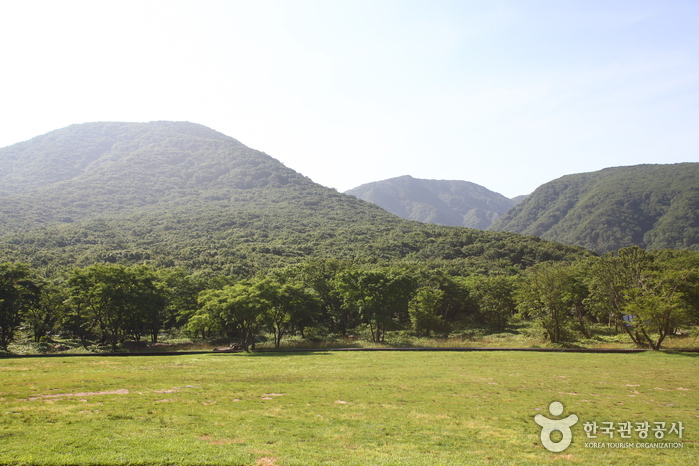
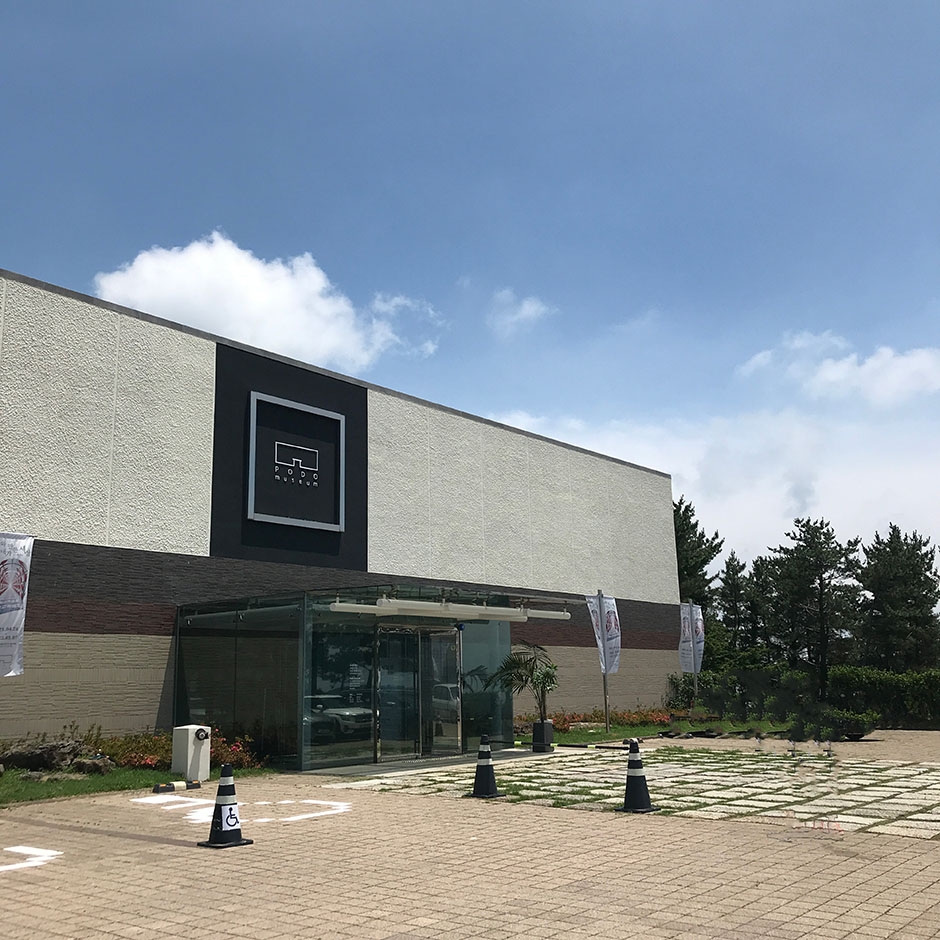
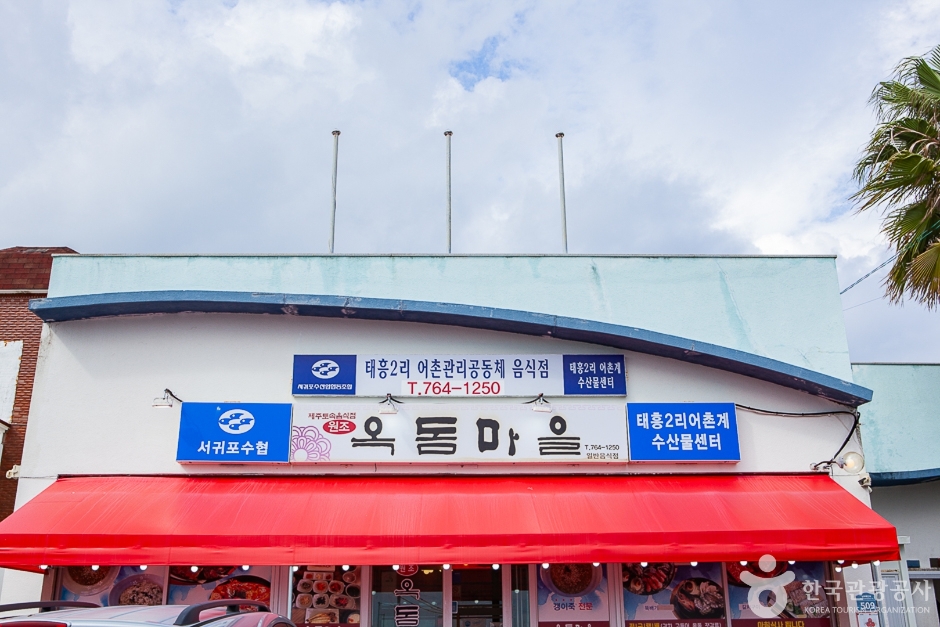
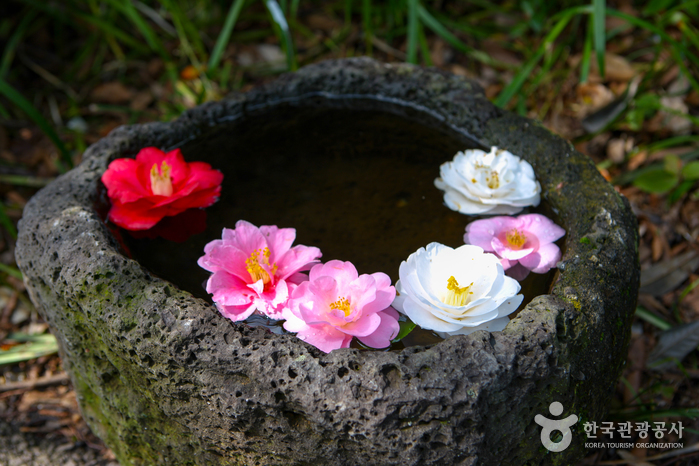
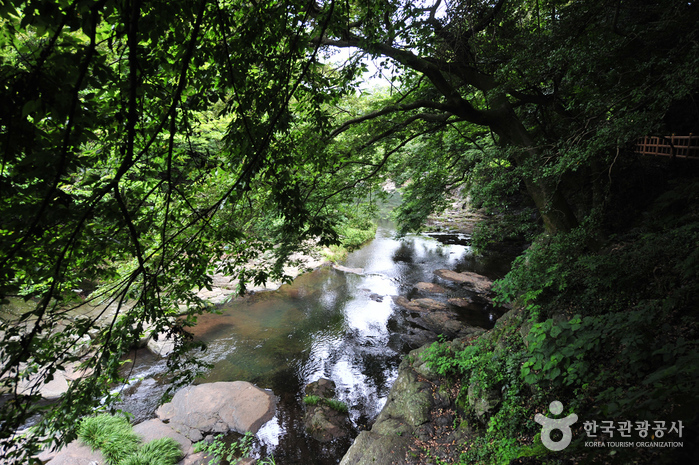
![Figure Museum Jeju [Tax Refund Shop] (피규어뮤지엄 제주)](http://tong.visitkorea.or.kr/cms/resource/80/2887680_image2_1.jpg)
 English
English
 한국어
한국어 日本語
日本語 中文(简体)
中文(简体) Deutsch
Deutsch Français
Français Español
Español Русский
Русский